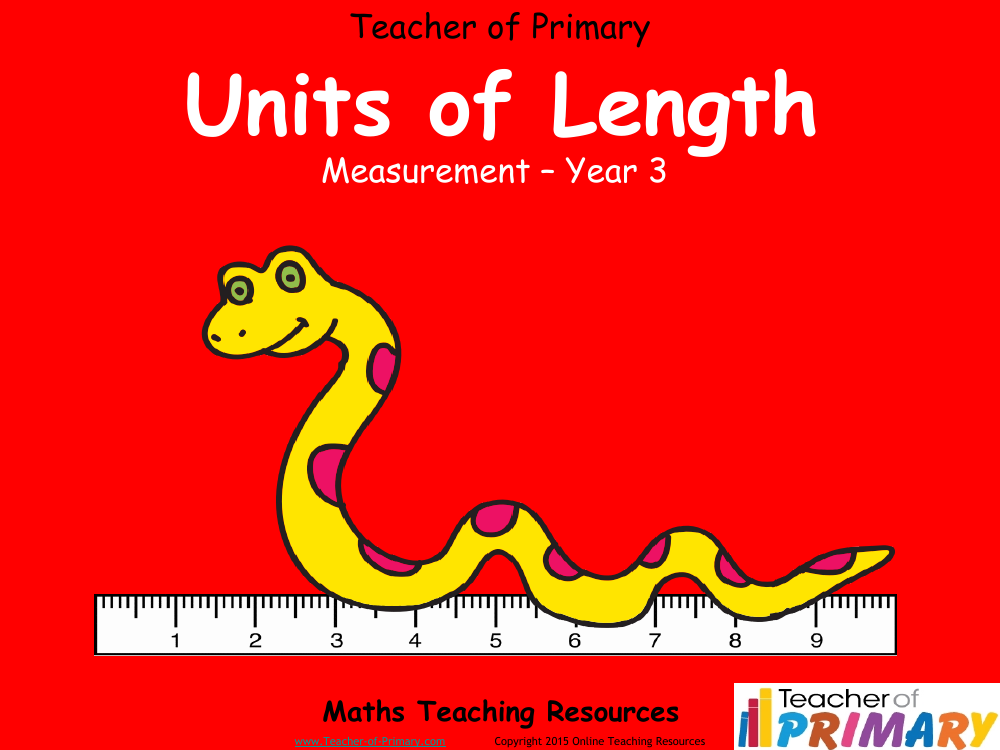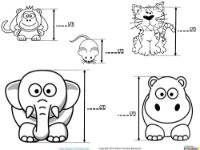Units of Length - PowerPoint

Maths Resource Description
The educational resource focuses on teaching Year 3 students about various units of length including millimetres (mm), centimetres (cm), and metres (m). The material presents these units in a hierarchical order from the smallest to the largest, with millimetres being the smallest unit followed by centimetres and then metres. It is explained that 10 millimetres make up 1 centimetre, and 100 centimetres constitute 1 metre. To facilitate understanding, the resource provides conversion examples, such as changing 600 centimetres into 6 metres by dividing by 100, and similarly converting 6 metres into 600 centimetres by multiplying by 100.
The resource goes further to demonstrate how these units can be used together, as in the case of a person being 136 centimetres tall, which can also be expressed as 1 metre and 36 centimetres. Practical exercises are included where students are tasked with converting given measurements between units, for instance, changing 300 centimetres to 3 metres or 4 metres to 400 centimetres. Additionally, the resource highlights the importance of using the correct unit of measurement for comparing lengths, adding and subtracting lengths, and solving real-world problems. For instance, to find out whether a 190 centimetre kangaroo jump is further than a 1800 millimetre frog jump, students must convert the measurements to the same unit before they can accurately compare them.

